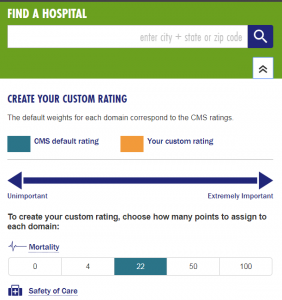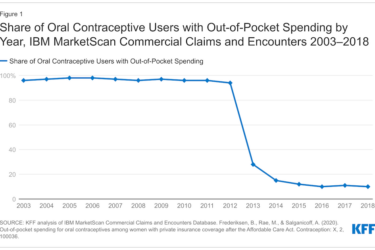 The federal Centers for Medicare and Medicaid Services launched the Hospital Compare website to let consumers evaluate hospital performance based on a star-rating system. For those seeking to analyze hospitals’ overall scores, the site is useful but its one-size-fits-all approach limits how much patients can design searches to match their individual needs.
The federal Centers for Medicare and Medicaid Services launched the Hospital Compare website to let consumers evaluate hospital performance based on a star-rating system. For those seeking to analyze hospitals’ overall scores, the site is useful but its one-size-fits-all approach limits how much patients can design searches to match their individual needs.
Now researchers at the Rand Corporation have built a tool called the Personalized Hospital Performance Report Card that allows users to review, customize, and compare hospitals across the United States and develop their own custom ratings based on their most important performance areas.
In an article published in the Aug. 30 edition of the New England Journal of Medicine, the Rand researchers report on how CMS, other hospital rating organizations and hospitals themselves could use Rand’s tools to allow patients to produce ratings of hospitals that are more tailored to the types of performance consumers expect from hospitals. Here’s a link to the tool on the Rand site.
“Out tool illustrates a measurement principle that we hope anybody who creates a global composite measure of hospital performance will consider adopting because our tool offers personalization you can’t get in any other way,” Mark Friedberg, M.D., a general internist and senior physician scientist at Rand explained in a phone interview. Friedberg is one of the authors of the NEJM article.
Reports on hospital quality that are tailored to the average patient are unlikely to meet the wishes of most patients, Rand said. When two patients require knee surgery, for example, a pregnant woman would have different health care needs than a middle-aged man would have, the researchers added.
“In the internet era, there’s no reason why these report cards can’t be customized to each individual patient’s needs and preferences,” Friedberg said in a news release from Rand.
To show how such customized rankings would work, the researchers used data from the 2016 version of CMS’ Hospital Compare site star ratings system to build a web tool that allows users to create custom rankings of most hospitals in the nation, RAND said. CMS said last year that it would continue to update the tool twice annually.
To produce an overall hospital rating, CMS summarizes data from as many as 57 quality measures (such as the readmission rate for heart attack patients) that reflect care for patients with common conditions. An overall hospital rating of one to five stars shows how well each hospital does, on average, when compared against other U.S. hospitals. Five stars are best, and the most common overall hospital rating is three stars.
Note that CMS publishes ratings for only about 80 percent of the nation’s 5,000 hospitals because some hospitals (such as those that are small or new) do not have enough data on the individual quality measures used to calculate the overall ratings.
For its ratings, CMS uses data on seven performance domains:
- Mortality,
- Safety of care,
- Readmissions,
- Patient experience,
- Timeliness of care,
- Effectiveness of care, and
- Efficient use of medical imaging.
Using these data, CMS weights each of the seven domains by applying two scores (four points and 22 points) to each domain, the Rand researchers explained. Three of CMS’ seven domains have a default weight of four points and the other four domains have a default weight of 22 points.
For its tool, Rand allows consumers to use five weights so that they can rate each of the seven domains differently: (0 points, 4 points, 22 points, 50 points and 100 points), depending on their preferences.
“Allowing users to choose from five possible weights for each of the seven domains resulted in thousands of possible combinations,” Rand explained on its web site. “No other modifications were made to the star rating calculation methods.”
To ensure that all possible combinations of weights summed to 100 percent, Rand calculated the rescaled weights by dividing the points allocated to each domain by the total points assigned.
Rand’s calculator does not include the most recent Hospital Compare data because it is based on numbers taken from the December 2016 methods report from QualityNet, a website that CMS uses to exchange data and communications securely among quality improvement organizations, hospitals, physician offices, nursing homes, other providers and data vendors.
Currently, Rand does not plan to update its web tool because its purpose is to illustrate how hospitals and other health care providers can apply user-entered weights to performance reports.
Journalists can request a copy of the NEJM article and a link to Rand’s web tool by sending an email to Warren Robak (mrobak@rand.org) or by calling Robak at 310-451-6913 in Rand’s media relations department.








